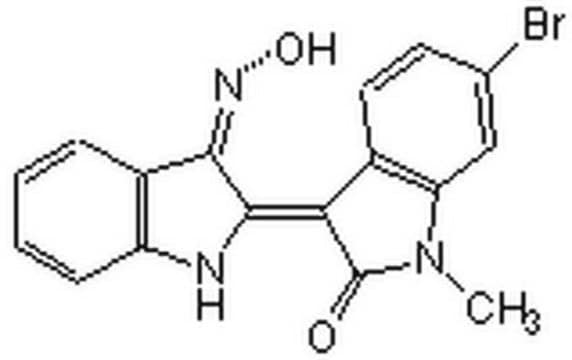361550
BIO
≥97% (HPLC), solid, GSK-3GSK-3α/β inhibitor, Calbiochem
Synonym(e):
GSK-3-Inhibitor IX, BIO, (2ʹZ,3ʹE)-6-Bromindirubin-3ʹ-oxim
About This Item
Empfohlene Produkte
product name
GSK-3-Inhibitor IX, BIO, CAS 667463-62-9, is a cell-permeable, highly potent, selective, reversible, and ATP-competitive inhibitor of GSK-3α/β (IC₅₀ = 5 nM). Maintains self-renewal in human & mouse embryonic stem cells.
Qualitätsniveau
Assay
≥97% (HPLC)
Form
solid
Hersteller/Markenname
Calbiochem®
Lagerbedingungen
OK to freeze
protect from light
Farbe
purple
Löslichkeit
DMSO: 5 mg/mL
Versandbedingung
wet ice
Lagertemp.
2-8°C
Biochem./physiol. Wirkung
Verpackung
Warnhinweis
Rechtliche Hinweise
Lagerklassenschlüssel
11 - Combustible Solids
WGK
WGK 3
Analysenzertifikate (COA)
Suchen Sie nach Analysenzertifikate (COA), indem Sie die Lot-/Chargennummer des Produkts eingeben. Lot- und Chargennummern sind auf dem Produktetikett hinter den Wörtern ‘Lot’ oder ‘Batch’ (Lot oder Charge) zu finden.
Besitzen Sie dieses Produkt bereits?
In der Dokumentenbibliothek finden Sie die Dokumentation zu den Produkten, die Sie kürzlich erworben haben.
Unser Team von Wissenschaftlern verfügt über Erfahrung in allen Forschungsbereichen einschließlich Life Science, Materialwissenschaften, chemischer Synthese, Chromatographie, Analytik und vielen mehr..
Setzen Sie sich mit dem technischen Dienst in Verbindung.





